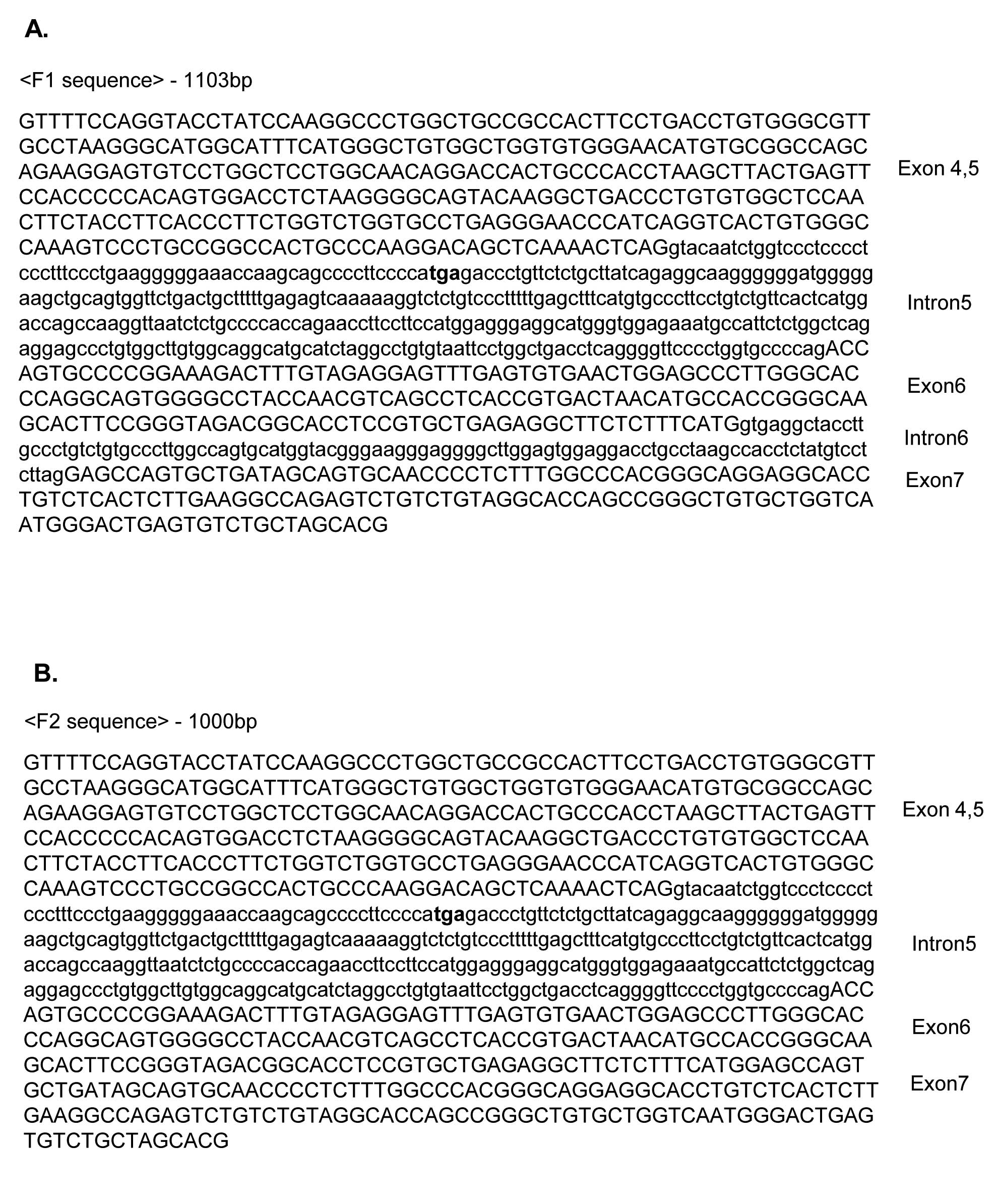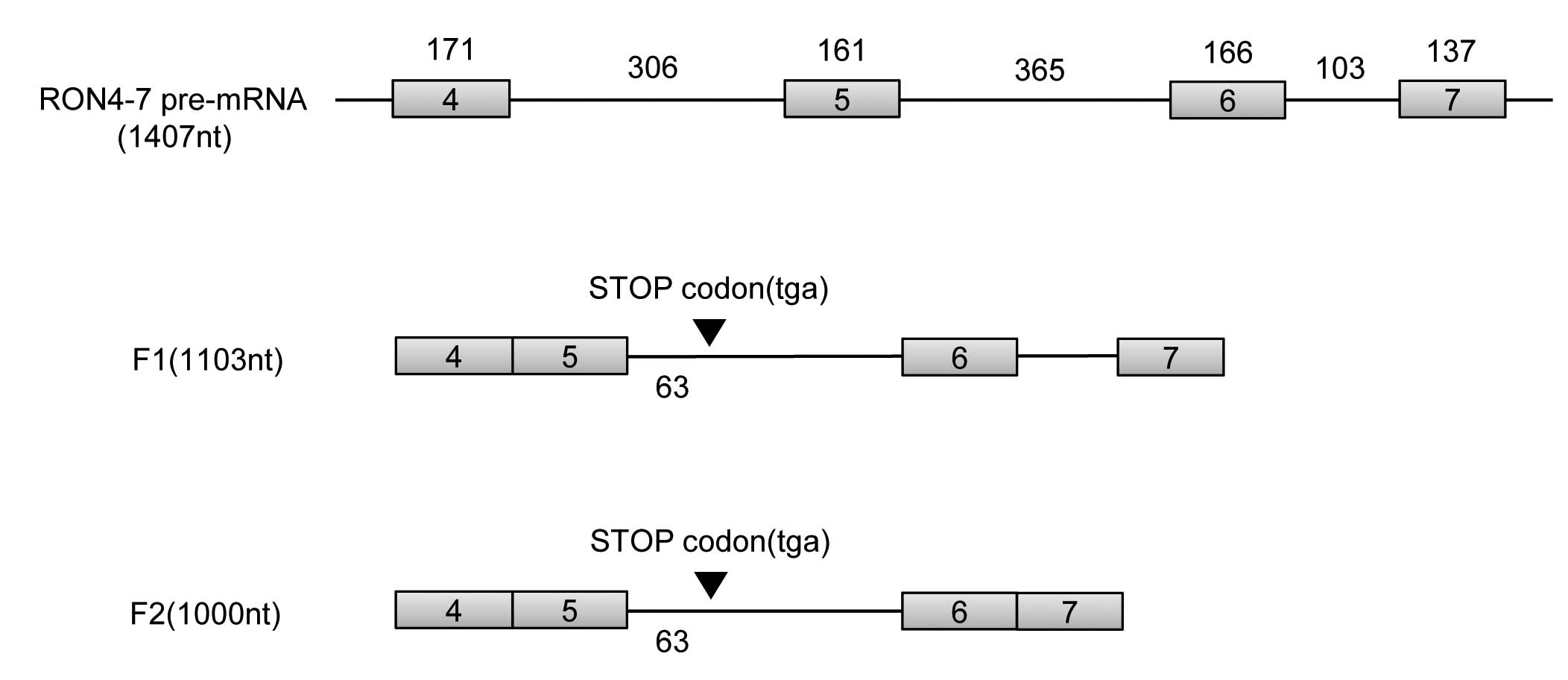|
1
|
Ronsin C, Muscatelli F, Mattei MG and
Breathnach R: A novel putative receptor protein tyrosine kinase of
the met family. Oncogene. 8:1195–1202. 1993.PubMed/NCBI
|
|
2
|
Trusolino L and Comoglio PM:
Scatter-factor and semaphorin receptors: cell signalling for
invasive growth. Nature reviews Cancer. 2:289–300. 2002. View Article : Google Scholar : PubMed/NCBI
|
|
3
|
Wang MH, Wang D and Chen YQ: Oncogenic and
invasive potentials of human macrophage-stimulating protein
receptor, the RON receptor tyrosine kinase. Carcinogenesis.
24:1291–1300. 2003. View Article : Google Scholar : PubMed/NCBI
|
|
4
|
van der Geer P, Hunter T and Lindberg RA:
Receptor protein-tyrosine kinases and their signal transduction
pathways. AnnuRev Cell Biol. 10:251–337. 1994.PubMed/NCBI
|
|
5
|
Robertson SC, Tynan J and Donoghue DJ: RTK
mutations and human syndromes: when good receptors turn bad. Trends
Genet. 16:265–271. 2000. View Article : Google Scholar
|
|
6
|
Birchmeier W, Brinkmann V, Niemann C, et
al: Role of HGF/SF and c-Met in morphogenesis and metastasis of
epithelial cells. Ciba Found Symp. 212:230–240. 1997.PubMed/NCBI
|
|
7
|
Niranjan B, Buluwela L, Yant J, et al:
HGF/SF: a potent cytokine for mammary growth, morphogenesis and
development. Development. 121:2897–2908. 1995.PubMed/NCBI
|
|
8
|
Vande Woude GF, Jeffers M, Cortner J,
Alvord G, Tsarfaty I and Resau J: Met-HGF/SF: tumorigenesis,
invasion and metastasis. Ciba Found Symp. 212:119–154.
1997.PubMed/NCBI
|
|
9
|
Comoglio PM, Tamagnone L and Boccaccio C:
Plasminogen-related growth factor and semaphorin receptors: a gene
superfamily controlling invasive growth. Exp Cell Res. 253:88–99.
1999. View Article : Google Scholar : PubMed/NCBI
|
|
10
|
Xu XM, Zhou YQ and Wang MH: Mechanisms of
cytoplasmic{beta}-catenin accumulation and its involvement in
tumorigenic activities mediated by oncogenic splicing variant of
the receptor originated from Nantes tyrosine kinase. J Biol Chem.
280:25087–25094. 2005.
|
|
11
|
Chen YQ, Zhou YQ, Angeloni D, Kurtz AL,
Qiang XZ and Wang MH: Overexpression and activation of the RON
receptor tyrosine kinase in a panel of human colorectal carcinoma
cell lines. Exp Cell Res. 261:229–238. 2000. View Article : Google Scholar : PubMed/NCBI
|
|
12
|
Lu Y, Yao HP and Wang MH: Multiple
variants of the RON receptor tyrosine kinase: biochemical
properties, tumorigenic activities, and potential drug targets.
Cancer Lett. 257:157–164. 2007. View Article : Google Scholar : PubMed/NCBI
|
|
13
|
Gaudino G, Follenzi A, Naldini L, et al:
RON is a heterodimeric tyrosine kinase receptor activated by the
HGF homologue MSP. EMBO J. 13:3524–3532. 1994.PubMed/NCBI
|
|
14
|
Skeel A, Yoshimura T, Showalter SD, Tanaka
S, Appella E and Leonard EJ: Macrophage stimulating protein:
purification, partial amino acid sequence, and cellular activity. J
Exp Med. 173:1227–1234. 1991. View Article : Google Scholar : PubMed/NCBI
|
|
15
|
Bezerra JA, Witte DP, Aronow BJ and Degen
SJ: Hepatocyte-specific expression of the mouse hepatocyte growth
factor-like protein. Hepatology. 18:394–399. 1993.PubMed/NCBI
|
|
16
|
Danilkovitch A and Leonard EJ: Kinases
involved in MSP/RON signaling. J Leukoc Biol. 65:345–348.
1999.PubMed/NCBI
|
|
17
|
Danilkovitch-Miagkova A and Zbar B:
Dysregulation of Met receptor tyrosine kinase activity in invasive
tumors. J Clin Invest. 109:863–867. 2002. View Article : Google Scholar : PubMed/NCBI
|
|
18
|
Wang MH, Montero-Julian FA, Dauny I and
Leonard EJ: Requirement of phosphatidylinositol-3 kinase for
epithelial cell migration activated by human macrophage stimulating
protein. Oncogene. 13:2167–2175. 1996.PubMed/NCBI
|
|
19
|
Santoro MM, Collesi C, Grisendi S, Gaudino
G and Comoglio PM: Constitutive activation of the RON gene promotes
invasive growth but not transformation. Mol Cell Biol.
16:7072–7083. 1996.PubMed/NCBI
|
|
20
|
Camp ER, Liu W, Fan F, Yang A, Somcio R
and Ellis LM: RON, a tyrosine kinase receptor involved in tumor
progression and metastasis. Ann Surg Oncol. 12:273–281. 2005.
View Article : Google Scholar : PubMed/NCBI
|
|
21
|
Rodrigues GA and Park M: Oncogenic
activation of tyrosine kinases. Curr Opin Genet Dev. 4:15–24. 1994.
View Article : Google Scholar : PubMed/NCBI
|
|
22
|
Wang MH, Lee W, Luo YL, Weis MT and Yao
HP: Altered expression of the RON receptor tyrosine kinase in
various epithelial cancers and its contribution to tumourigenic
phenotypes in thyroid cancer cells. J Pathol. 213:402–411. 2007.
View Article : Google Scholar
|
|
23
|
Wang MH, Kurtz AL and Chen Y:
Identification of a novel splicing product of the RON receptor
tyrosine kinase in human colorectal carcinoma cells.
Carcinogenesis. 21:1507–1512. 2000. View Article : Google Scholar : PubMed/NCBI
|
|
24
|
Wang MH, Lao WF, Wang D, Luo YL and Yao
HP: Blocking tumorigenic activities of colorectal cancer cells by a
splicing RON receptor variant defective in the tyrosine kinase
domain. Cancer Biol Ther. 6:1121–1129. 2007. View Article : Google Scholar : PubMed/NCBI
|
|
25
|
Collesi C, Santoro MM, Gaudino G and
Comoglio PM: A splicing variant of the RON transcript induces
constitutive tyrosine kinase activity and an invasive phenotype.
Mol Cell Biol. 16:5518–5526. 1996.
|
|
26
|
Zhou YQ, He C, Chen YQ, Wang D and Wang
MH: Altered expression of the RON receptor tyrosine kinase in
primary human colorectal adenocarcinomas: generation of different
splicing RON variants and their oncogenic potential. Oncogene.
22:186–197. 2003. View Article : Google Scholar
|
|
27
|
Eckerich C, Schulte A, Martens T, Zapf S,
Westphal M and Lamszus K: RON receptor tyrosine kinase in human
gliomas: expression, function, and identification of a novel
soluble splice variant. J Neurochem. 109:969–980. 2009. View Article : Google Scholar : PubMed/NCBI
|












